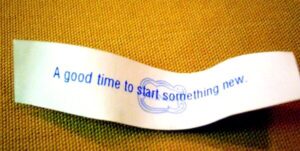
5 Social Skills Business Leaders Must Master
Social engagement is not a management overlay on a toxic culture. It’s not a Band-Aid, a work-around or a cure-all. But what DOES it take to be an effective social leader in today’s world of work?

Social engagement is not a management overlay on a toxic culture. It’s not a Band-Aid, a work-around or a cure-all. But what DOES it take to be an effective social leader in today’s world of work?

Trust is essential to business success — and it’s a two-way street. How can leaders create a trust-based culture? A young entrepreneur weighs in

How are employers pushing the “gamification” envelope to improve hiring and management decisions? See highlights and collected resources from a week of playful #TChat events

Competition in the workplace is unavoidable. How do you make the most of it, without letting it get the best of you?

In today’s world of work, shift happens. The defining question for leaders is how will you make the most of those dynamics?

What’s the best compensation strategy for interns — pay or no pay? This infographic helps employers weigh pros and cons

What does it mean to be “ready” for workplace violence or disaster? Even after a massive wake-up call on 9/11/2001, many of us aren’t fully prepared. What should we know?

Every company has a distinctive organizational culture and “hiring culture.” To improve the impact of your hiring culture, focus on 3 essential elements…

Negative performance feedback is tricky to give and receive — but hiding the message doesn’t help. Try these 5 ideas for a more satisfying outcome

Think you’re ready to quit your job and strike out on your own as an entrepreneur? There may be a better path to your professional goals…

Do accepted brainstorming practices work as well as we think? How can teams do a better job of sparking creative ideas in today’s workplace?

Employers are on a mission to reignite passion and productivity in the workplace. How can they make that happen with existing talent?

Do you see a talent tsunami ahead? What is your organization doing to protect your investment in employee morale and performance?

Research confirms that employees are suffering at the hands of poor managers — and business performance is right behind. How can companies turn this around?

Finding the next superstar employee can be a challenge. It can start by hiring solid interns, since they often move to full-time positions. But what traits should you look for?

“Big data” is all the rage. But what does it really mean, and how can HR professionals apply if effectively for better business decisions? #TChat takes on the big questions about data…

What can today’s graduates expect as they enter the work world? The TalentCulture community talked about this and more during a whirlwind week at #SHRM13…

The TalentCulture community is heading to Chicago — along with 18,000 HR professionals who are gathering to discuss the future world of work. Join in, as we work the floor at #SHRM13!

Customer and employee engagement are similar in many ways. Here’s how customer experience disconnects can inspire better employee communications…

How can organizations encourage collaboration? And why does it matter? The TalentCulture community opens up about open leadership…

How can we create a more engaging experience for tomorrow’s workforce? And what do today’s graduates see ahead in their careers? We’ll explore this and more, LIVE at SHRM13. Join us!

Work is changing — and your work environment needs to keep up. If you’re looking to boost productivity or performance, take a look around you, and consider the possibilities…

HR technology is advancing at breakneck pace! Is that all good — or are we at risk of losing something vital in acquiring and developing talent? See wisdom from the TalentCulture crowd…

It’s a big week ahead in the world of work! On the road LIVE from the HRO Today Forum, we’re showcasing HR business and technology innovators. Take a sneak peek at this week’s events and star performers…

How can business apply social tools and techniques to connect with those in need – around the corner or around the world? Our community exchanges ideas with experts on “social good” in the workplace…